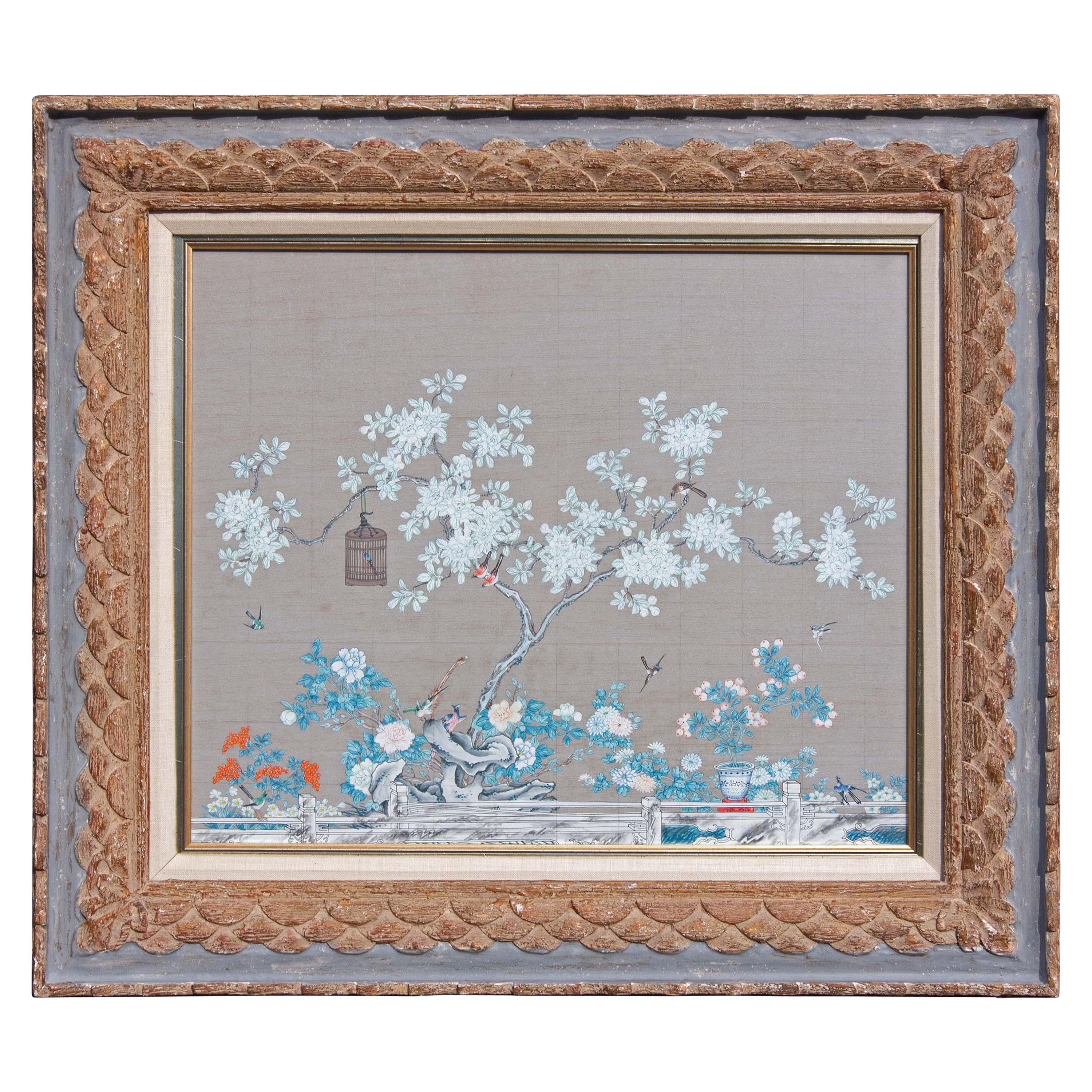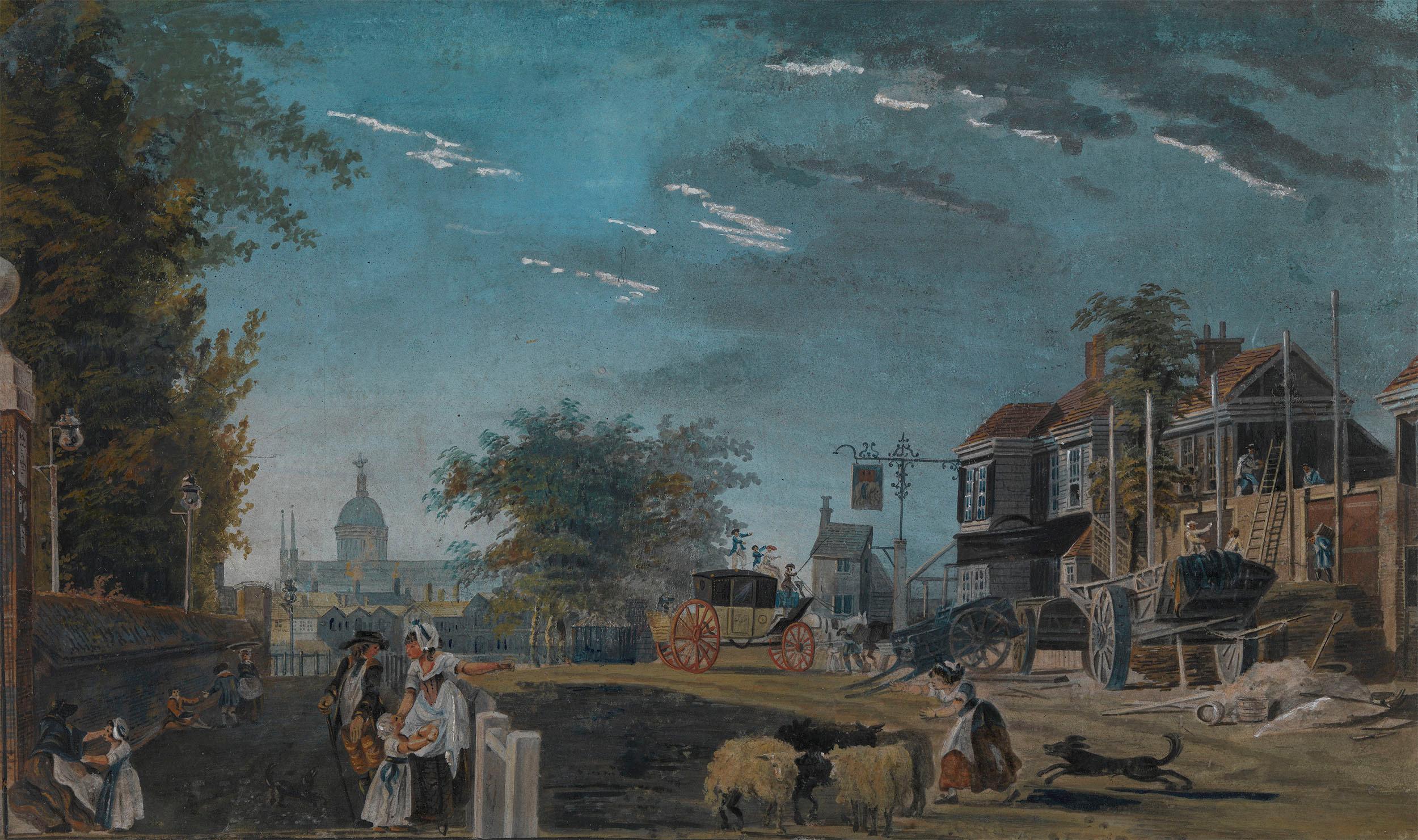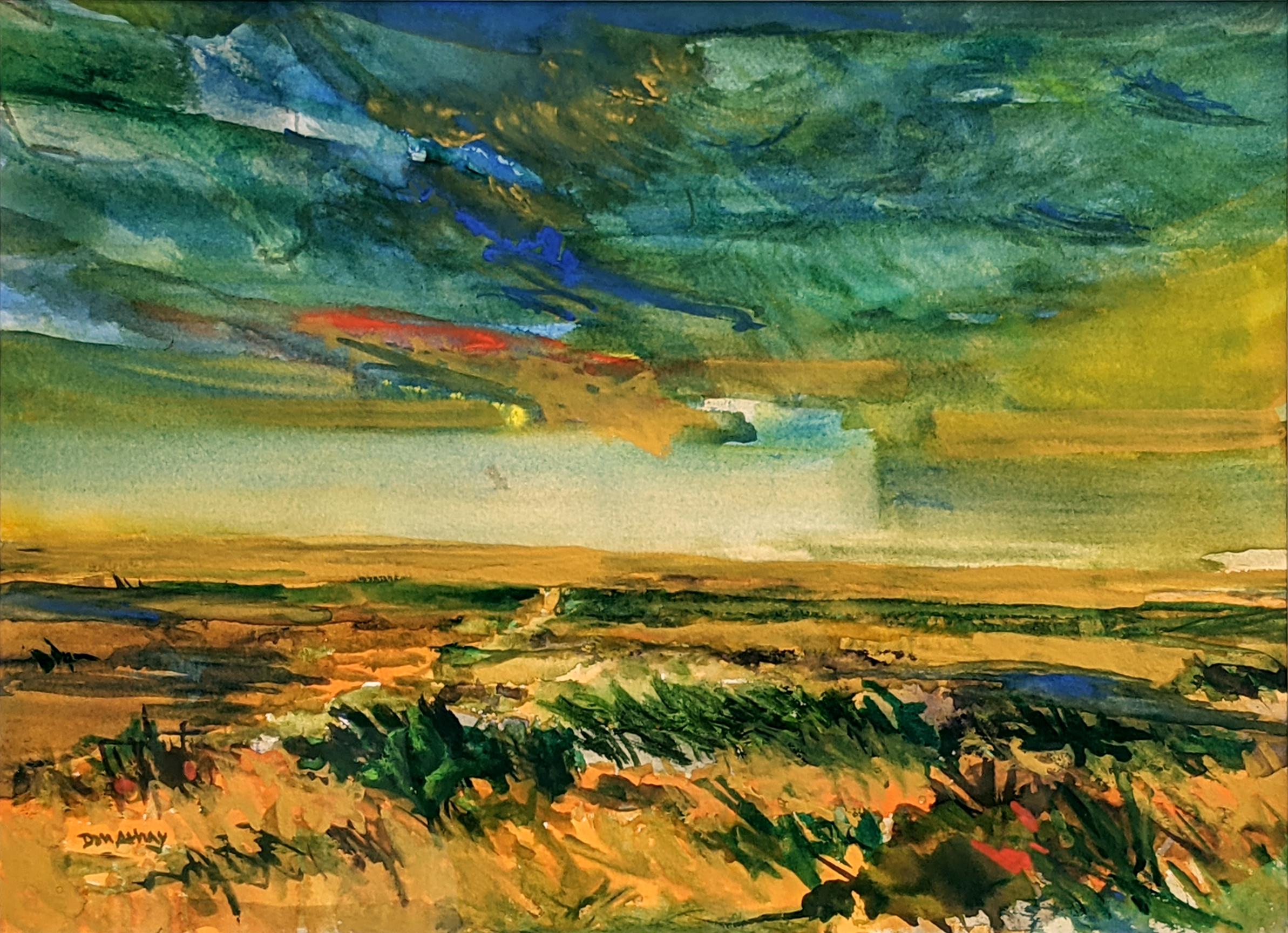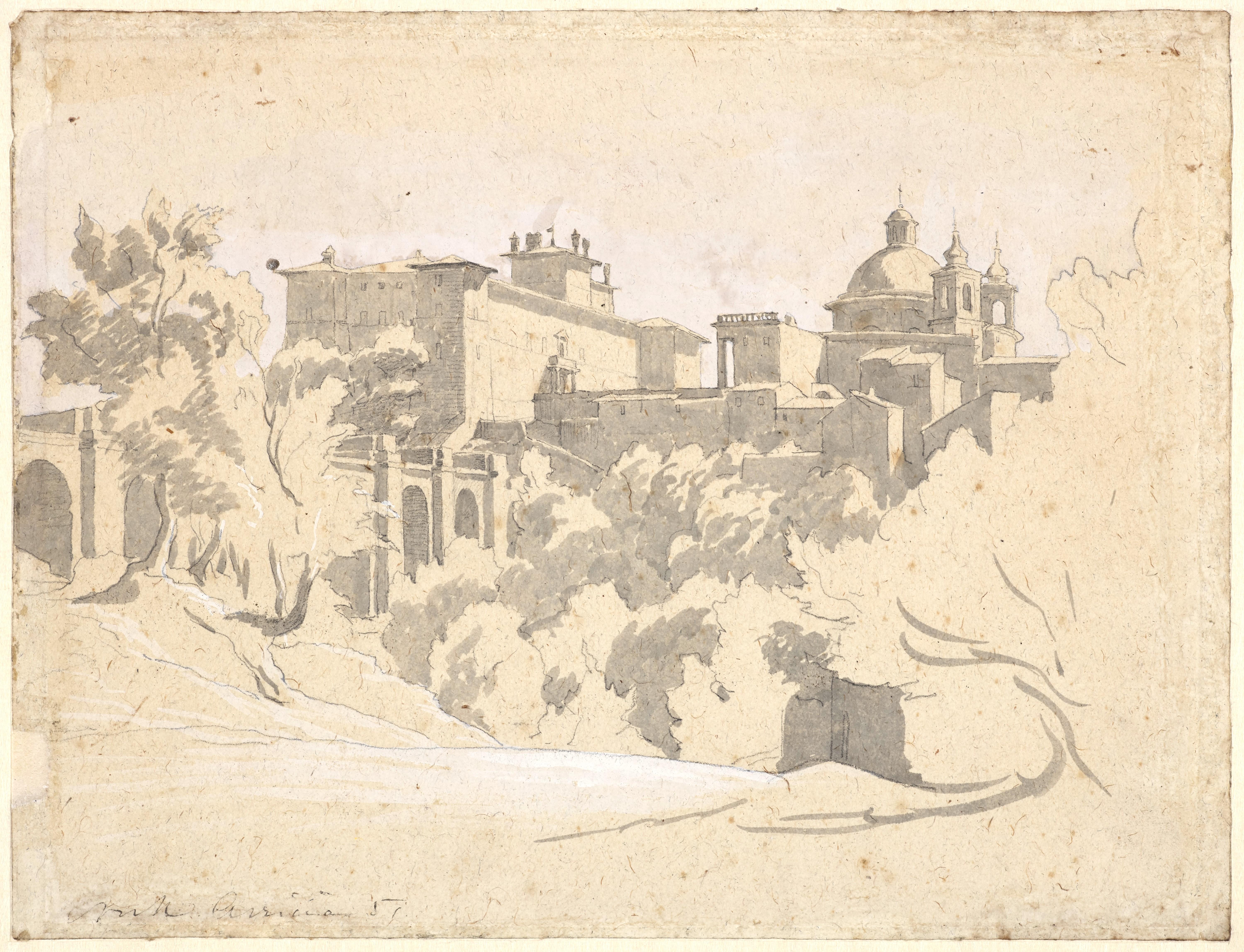Items Similar to Palace with Vignettes of Scenes of Royal Court Life
Want more images or videos?
Request additional images or videos from the seller
1 of 14
UnknownPalace with Vignettes of Scenes of Royal Court Lifec. 1820
c. 1820
About the Item
Palace with Vignettes of Scenes of Royal Court Life
Early 19th century Rajput School
Gouache on heavy paper, mounted to gold flecked support board
c. 1820
Unsigned as usual
Inscribed on mount
Provenance:
De-accessioned from the Richmond, Indiana Art Museum, who acquired the work in 1956 (Accession No. 56.13), see photo
“Rajput School Early 19th Cent” with stock numbers (see photos)
- Creation Year:c. 1820
- Dimensions:Height: 14.5 in (36.83 cm)Width: 20.63 in (52.41 cm)
- Medium:
- Movement & Style:Rajput
- Period:
- Condition:
- Gallery Location:Fairlawn, OH
- Reference Number:
About the Seller
5.0
Recognized Seller
These prestigious sellers are industry leaders and represent the highest echelon for item quality and design.
Platinum Seller
These expertly vetted sellers are 1stDibs' most experienced sellers and are rated highest by our customers.
Established in 1978
1stDibs seller since 2013
711 sales on 1stDibs
Typical response time: 1 hour
Associations
International Fine Print Dealers Association
- ShippingRetrieving quote...Ships From: Fairlawn, OH
- Return PolicyA return for this item may be initiated within 10 days of delivery.
More From This SellerView All
- Arctic Light - Orange SunBy Karl ZerbeLocated in Fairlawn, OHArctic Light-Orange Sun Unsigned Gouache on Japanese fibrous paper Series: Tundra Paintings Exhibited: Karl Zerbe, Gouaches of the Artic Nordness Gallery, (Madison Avenue, NY) Feb 3 through Feb 23, 1958 Cat. No. 12 (label with work, see photo...Category
1950s American Modern Abstract Paintings
MaterialsGouache
- Untitled (Surrealist rendering of Pyramids at Giza with alligator)By Beni E. KoshLocated in Fairlawn, OHUntitled (Surrealist rendering of Pyramids at Giza with alligator) watecolor and gouache on paper, 1960 Unsigned Beni Kosh estate stamp No. 717 verso, unsigned. (see photo) Co...Category
1960s Surrealist Landscape Drawings and Watercolors
MaterialsWatercolor, Gouache
- Landscape with TreesBy Leon KellyLocated in Fairlawn, OHLandscape with Trees Watercolor on paper, 1929 Signed in pencil lower right corner Obviously influenced by the Cezanne works in the collection of his patron Alfred C. Barnes of Phila...Category
1920s American Modern Landscape Paintings
MaterialsWatercolor
- Gaspe HomesBy William C. GrauerLocated in Fairlawn, OHTitle Unknown (Gaspe Bay Houses) Acrylic on board, 46 1/4 x 34 inches Signed lower right Condition: Good Minor surface wear to the frame Provenance: Estate of the artist by decent to his daughter Gretchen William C. Grauer (1895-1985) William C. Grauer (1895-1985) was born in Philadelphia to German immigrant parents. After attending the Philadelphia Museum School of Industrial Art, Grauer received a four year scholarship from the City of Philadelphia to pursue post graduate work. It was during this time that Grauer began working as a designer at the Decorative Stained Glass Co. in Philadelphia. Following his World War I service in France, Grauer moved to Akron, Ohio where he opened a studio in 1919 with his future brother-in-law, the architect George Evans...Category
1970s American Modern Landscape Paintings
MaterialsAcrylic
- Canyon CountryBy William C. GrauerLocated in Fairlawn, OHAcrylic on board Signed lower right corner Condition: Painting is excellent Frame has surface wear Provenance: Estate of the artist William C. Grauer (1895-1985) William C. Grauer (1895-1985) was born in Philadelphia to German immigrant parents. After attending the Philadelphia Museum School of Industrial Art, Grauer received a four year scholarship from the City of Philadelphia to pursue post graduate work. It was during this time that Grauer began working as a designer at the Decorative Stained Glass Co. in Philadelphia. Following his World War I service in France, Grauer moved to Akron, Ohio where he opened a studio in 1919 with his future brother-in-law, the architect George Evans...Category
1970s American Modern Landscape Paintings
MaterialsAcrylic, ABS
- Jersey Shore IIIBy Adolf Arthur DehnLocated in Fairlawn, OHJersey Shore III Casein on Masonite, 1967 Signed lower right (see photo) Initialed, dated and titled verso Provenance: Estate of the artist Virginia Dehn (the artist's widow) Dehn Quests Created on location on the Jersey Shore. The Jersey Shore was the main playground for thousand to escape the summer heat of New York. This small painting shows Dehn's mastery of patterning color to depict movement and recreation. Part of a suite of paintings done on this theme. Within a year of it's creation, Dehn dies from a heart attack. Casein on Masonite Condition: Excellent Image: 6 x 11" Frame: 9 3/8 x 14 1/2" Adolf Dehn, American Watercolorist and Printmaker, 1895-1968 Adolf Dehn was an artist who achieved extraordinary artistic heights, but in a very particular artistic sphere—not so much in oil painting as in watercolor and lithography. Long recognized as a master by serious print collectors, he is gradually gaining recognition as a notable and influential figure in the overall history of American art. In the 19th century, with the invention of the rotary press, which made possible enormous print runs, and the development of the popular, mass-market magazines, newspaper and magazine illustration developed into an artistic realm of its own, often surprisingly divorced from the world of museums and art exhibitions, and today remains surprisingly overlooked by most art historians. Dehn in many regards was an outgrowth of this world, although in an unusual way, since as a young man he produced most of his illustrative work not for popular magazines, such as The Saturday Evening Post, but rather for radical journals, such as The Masses or The Liberator, or artistic “little magazines” such as The Dial. This background established the foundation of his outlook, and led later to his unique and distinctive contribution to American graphic art. If there’s a distinctive quality to his work, it was his skill in introducing unusual tonal and textural effects into his work, particularly in printmaking but also in watercolor. Jackson Pollock seems to have been one of many notable artists who were influenced by his techniques. Early Years, 1895-1922 For an artist largely remembered for scenes of Vienna and Paris, Adolf Dehn’s background was a surprising one. Born in Waterville, Minnesota, on November 22, 1895, Dehn was the descendent of farmers who had emigrated from Germany and homesteaded in the region, initially in a one-room log cabin with a dirt floor. Adolf’s father, Arthur Clark Dehn, was a hunter and trapper who took pride that he had no boss but himself, and who had little use for art. Indeed, during Adolf’s boyhood the walls of his bedroom and the space under his bed were filled with the pelts of mink, muskrats and skunks that his father had killed, skinned and stretched on drying boards. It was Adolf’s mother, Emilie Haas Dehn, a faithful member of the German Lutheran Evangelical Church, who encouraged his interest in art, which became apparent early in childhood. Both parents were ardent socialists, and supporters of Eugene Debs. In many ways Dehn’s later artistic achievement was clearly a reaction against the grinding rural poverty of his childhood. After graduating from high school in 1914 at the age of 19—an age not unusual in farming communities at the time, where school attendance was often irregular—Dehn attended the Minneapolis School of Art from 1914 to 1917, whose character followed strongly reflected that of its director, Munich-trained Robert Kohler, an artistic conservative but a social radical. There Dehn joined a group of students who went on to nationally significant careers, including Wanda Gag (later author of best-selling children’s books); John Flanagan (a sculptor notable for his use of direct carving) Harry Gottlieb (a notable social realist and member of the Woodstock Art Colony), Elizabeth Olds (a printmaker and administrator for the WPA), Arnold Blanch (landscape, still-life and figure painter, and member of the Woodstock group), Lucille Lunquist, later Lucille Blanch (also a gifted painter and founder of the Woodstock art colony), and Johan Egilrud (who stayed in Minneapolis and became a journalist and poet). Adolf became particularly close to Wanda Gag (1893-1946), with whom he established an intense but platonic relationship. Two years older than he, Gag was the daughter of a Bohemian artist and decorator, Anton Gag, who had died in 1908. After her husband died, Wanda’s mother, Lizzi Gag, became a helpless invalid, so Wanda was entrusted with the task of raising and financially supporting her six younger siblings. This endowed her with toughness and an independent streak, but nonetheless, when she met Dehn, Wanda was Victorian and conventional in her artistic taste and social values. Dehn was more socially radical, and introduced her to radical ideas about politics and free love, as well as to socialist publications such as The Masses and The Appeal to Reason. Never very interested in oil painting, in Minneapolis Dehn focused on caricature and illustration--often of a humorous or politically radical character. In 1917 both Dehn and Wanda won scholarships to attend the Art Students League, and consequently, in the fall of that year both moved to New York. Dehn’s art education, however, ended in the summer of 1918, shortly after the United States entered World War I, when he was drafted to serve in the U. S. Army. Unwilling to fight, he applied for status as a conscientious objector, but was first imprisoned, then segregated in semi-imprisonment with other Pacifists, until the war ended. The abuse he suffered at this time may well explain his later withdrawal from taking political stands or making art of an overtly political nature. After his release from the army, Dehn returned to New York where he fell under the spell of the radical cartoonist Boardman Robinson and produced his first lithographs. He also finally consummated his sexual relationship with Wanda Gag. The Years in Europe: 1922-1929 In September of 1921, however, he abruptly departed for Europe, arriving in Paris and then moving on to Vienna. There in the winter of 1922 he fell in love with a Russian dancer, Mura Zipperovitch, ending his seven-year relationship with Wanda Gag. He and Mura were married in 1926. It was also in Vienna that he produced his first notable artistic work. Influenced by European artists such as Jules Pascin and Georg Grosz, Dehn began producing drawings of people in cafes, streets, and parks, which while mostly executed in his studio, were based on spontaneous life studies and have an expressive, sometimes almost childishly wandering quality of line. The mixture of sophistication and naiveté in these drawings was new to American audiences, as was the raciness of their subject matter, which often featured pleasure-seekers, prostitutes or scenes of sexual dalliance, presented with a strong element of caricature. Some of these drawings contain an element of social criticism, reminiscent of that found in the work of George Grosz, although Dehn’s work tended to focus on humorous commentary rather than savagely attacking his subjects or making a partisan political statement. Many Americans, including some who had originally been supporters of Dehn such as Boardman Robinson, were shocked by these European drawings, although George Grocz (who became a friend of the artist in this period) admired them, and recognized that Dehn could also bring a new vision to America subject matter. As he told Dehn: “You will do things in America which haven’t been done, which need to be done, which only you can do—as far at least as I know America.” A key factor in Dehn’s artistic evolution at this time was his association with Scofield Thayer, the publisher of the most notable modernist art and poetry magazine...Category
1960s American Modern Landscape Paintings
MaterialsOil
You May Also Like
- Wash Day, Coastal StreamBy Jules NoelLocated in Greenville, DESigned lower right dated 1875.Category
1870s Realist Landscape Paintings
MaterialsGouache, Watercolor
- Untitled: Abstract Figure and LeavesBy Gio ColucciLocated in Berlin, MDGio Colucci (Italian 1892-1974) Untitled: Abstract Figure and Leaves. Gouache on paper laid down on matt board. Archival framing under glass. Originally from the Con-Agra Corporat...Category
Early 20th Century Abstract Figurative Paintings
MaterialsLaid Paper, Gouache
- Chinese School Gouache Painting in Carved and Painted Frame circa 1940'sLocated in Rochester, NYDecorative Chinese school painting. Fine detail and painted with rich colors. In a wonderful carved frame painted in pastel blue.Category
1940s Landscape Paintings
MaterialsPaint, Gouache
- 18th century view of the Elephant and Castle in LondonLocated in London, GBCollections: With Martyn Gregory; Judy Egerton, 1984, acquired from the above; By descent to 2014. Exhibited: London, Martyn Gregory, Exhibition of English & Continental Watercolours, 1984, no. 94. London, Lowell Libson...Category
18th Century Old Masters Landscape Paintings
MaterialsVellum, Gouache
- RejuvenationBy Don AthayLocated in Salt Lake City, UT"Rejuvenation" by Don Athay, gouache, 10 1/2 X 14 1/2 inches "At this point in my life as an aspiring artist, I find myself composing paintings that reflect my feelings, when standi...Category
2010s Other Art Style Landscape Drawings and Watercolors
MaterialsGouache
- View of Ariccia, a preparatory drawing by Achille Bénouville (1815 - 1891)Located in PARIS, FRThis very modern drawing presents a view of Ariccia, a small town 25 kilometres south-east of Rome. The Palazzo Chigi (in which the film-maker Luchino Visconti would film a large part of The Leopard a century later) and the adjoining church are seen from the bottom of the ravine that surrounds the town. This drawing is a moving testimony to the attraction of the city for artists of the Romantic period, who established in Ariccia a vivid artists' colony. 1. Achille Bénouville...Category
1850s Romantic Landscape Drawings and Watercolors
MaterialsInk, Gouache, Pencil
Recently Viewed
View AllMore Ways To Browse
Stretch Armstrong
Vahe Yeremyan Summer Breeze
Vintage Shabby Chic Picture Frames
1986 Vintage Letter Box
Albert Eisenstadt
Claude Vallet
Henri Chapatte
Horn Speaker Used
Horn Speakers Used
Ivan Aivazovsky
Jackson Pollack Poster
Scott Allen New Mexico Mesa Landscape
Warlimpirrnga Tjapaltjarri
Art In America
4 X 4 Frame
Ukrainian Art
Monogrammed Painting
Gustav Klimt Art





